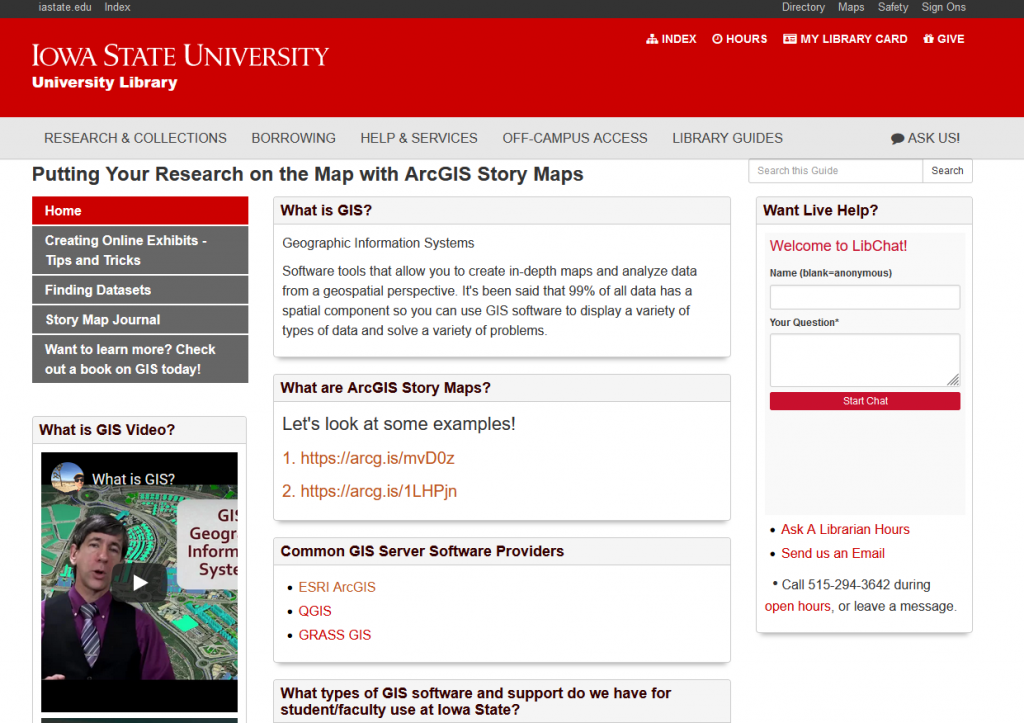A Quick Look into Two Worlds: Video Games and GIS
This week we are celebrating Iowa’s Computer Science Education Week – December 4-10, 2023. As part of this celebration, IowaView has a special post from guest blogger, Wael Alhaj, a GIS Analyst with the ISU GIS Facility.

A Quick Look into Two Worlds: Video Games and GIS
By Wael Alhaj
Imagine you’re playing your favorite video game, exploring new territories, or maybe you’re looking at a map, trying to find a place you’ve never been. Sounds pretty different, right? Actually, not as much as you might think! Video games and Geographic Information Systems (GIS), another term for map-making and analyzing, share more in common than you’d guess. Video games are all about fun and adventures, while GIS sounds like serious business with maps and data. But if we look more in depth, they are close related in the world of technology.

How Games and Maps Draw You into Their Worlds
Both video games and GIS are big on creating spaces, whether it’s a fantasy land in a game or a detailed map of your city. In video games, you might roam around imaginary places or ones that look similar to the real life. GIS, on the other hand, is more about mapping out the real world, but sometimes it uses simple and easy to understand pictures instead of super detailed ones. Both are all about giving you a sense of space one for fun, the other for facts and figures.
Making Things Look Real
As game players we ask, how do some games look almost like real life? This is called “visual realism” and it’s pretty impressive in today’s games. GIS does something similar, but instead of creating life-like world and landscapes, it shows real-life information in a way that makes sense by converting the data into a colorful map. Games go for the impressive appeal and eye-catching goal with graphics, while GIS tries to make complex info easy to get.
Handling Loads of Data
Video games and GIS deal with a lot of details. Games keep track of everything in their world such as places, objects, characters. As Same as in GIS, which combines location and spatial info with all sorts of other data. They both handle a ton of different kind of information, showing us how to manage and use big sort of data in different ways.
Scripts and User-Friendly Features
Both video games and GIS use some smart tricks behind the scenes. They’ve got algorithms for figuring out space related stuff, like how to find the best path from “A” to “B”. Games focus more on making everything interactive and fun, with everything happening in real-time. GIS concept is more about analyzing space and showing data in a fixed way. But deep down, the theories, codes and scripts they use is pretty similar.
Challenges and Possibilities
Video games and GIS can learn a lot from each other. Games are always pushing the limits of making things look real and keeping players engaged and hooked, which could be great for GIS to make maps more interesting and interactive. On the flip side, GIS focus on getting every detail right and accurate could help games, especially when a developer wants a game to mimic the real world.
So, the intersection where video games and GIS meet shows us how two areas we thought were worlds apart can actually help each other out. As tech keeps evolving, we’ll probably see more of this mix and match, leading to even great results in both gaming and the map-making industry. It’s all about being creative with space, whether it’s for fun, learning, or visualize facts and information.
References
For all the reasons mentioned above, GIS industry, including companies like ESRI, is actively working on developing various plugins and tools for game engines such as Unity and Unreal Engine. These tools are designed to help game developers and designers to create realistic world maps and 3D content using GIS data. For further reference, you can explore these links:
ArcGIS for Unity (https://developers.arcgis.com/unity/) and
ArcGIS for Unreal Engine (https://developers.arcgis.com/unreal-engine/).
Additionally, the paper “Videogames: the new GIS?” by Ifan D H Shepherd & Iestyn Bleasdale-Shepherd (https://www.researchgate.net/publication/228577009_Videogames_the_new_GIS), offers valuable insights and is a great resource while exploring this topic.

